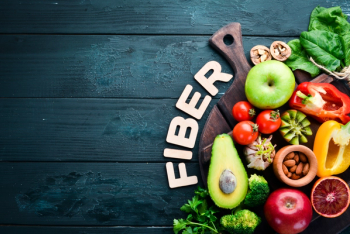
- Nutritional Outlook Vol. 22 No. 10
- Volume 22
- Issue 10
It’s Tea’s Time: Opportunities in tea, from cup to bottle
Tea consumers are becoming more savvy and adventurous, putting a premium on quality, and seeking better-for-you, functional options to supplement their health.
Tea makers have a lot to offer consumers in terms of flavor and format, with a broad array of options to meet consumers’ unique preferences. And those preferences are indeed unique. Consumers who choose loose leaf tea or tea bags are likely to be seeking a different experience than those who choose a ready-to-drink (RTD) or powder mix option, for instance.
While the tea space is diverse and vast, what is consistent across the board is that consumers are becoming more savvy and adventurous, putting a premium on quality, and seeking better-for-you, functional options to supplement their health.
Consumer Preferences
Earlier this year, flavors firm Comax Flavors (Melville, NY) released primary research on consumer behavior, usage, and attitudes toward tea products, including tea bags, RTDs, and tea powder mixes. The company’s poll of 1,000 U.S. respondents aged 18 to 70 years showed that a consumer’s preference for a specific tea format often also correlated with a preference for a certain flavor profile.
For example, those consumers who preferred tea bags also preferred more traditional tea flavors. Green tea was ranked the number one flavor, cited by 44% of respondents. The next popular flavor was plain/original black tea, cited by 27%, followed by sweet tea, earl gray, and English breakfast, cited by 21%, 20%, and 19% of respondents, respectively.
On the other hand, consumers of RTD tea tended to prefer sweeter flavors, as well as citrus and fruit flavors. Among flavors favored by RTD drinkers, lemon ranked number one, cited by 48% of respondents; sweet tea and green tea were tied for second place, each cited by 39% of respondents; followed by peach, cited by 38% of respondents. Those who drink tea powder mix showed similar preferences, with lemon once again ranking at number one, cited by 61% of respondents, followed by sweet tea, peach, and raspberry, cited by 41%, 38%, and 36% of respondents, respectively.
Another report titled “Modern Tea Trends 2019” from a UK-based organization called National Tea Day divided tea consumers into two groups: Traditionalists and Modernists. Traditionalists see tea as comforting, creamy, and sweet, while Modernists view tea as healthy, colorful, and sensual.
Modernists are more adventurous in their tea habits, seeking unique sensory experiences and exploring their options. Also, said the report, when it comes to brewing tea, although traditional varieties such as black tea or green tea remain popular, attracting new and younger consumers to tea may require offering something novel and of superior quality.
An Experience Worth Paying For
People are willing to pay up for quality. For example, according to 2018 projections from consultant Beverage Marketing Corp. (New York City), while total units of tea bags, iced tea mix, loose leaf tea, and single-serve tea declined from 3.68 billion units to 3.66 billion units, retail dollars earned grew by about $465 million. Notably, one of the largest tea categories, tea bags, which fell in sales volume, experienced year-over-year sales gains of $130 million in grocery, drug, mass market, convenience, and dollar store channels, reflecting a consumer preference for premium tea at a price point over 20% of traditional teas.1 So, while sales volume went down, the sales grew because consumers were willing to pay a premium.
The premiumization of tea, says National Tea Day, was cited by 33% of surveyed tea brands as a trend driving sales. In fact, in places like the United Kingdom, where tea service is a huge part of the culture, the consumer access to premium tea is forcing food service venues to step up their game and provide even better options and superior service.
Better-for-You Potential
Perhaps the most important trend driving sales in the tea space is health and wellness, which National Tea Day says was cited by 80% of surveyed tea brands. Herbal teas have long been associated with health benefits, but tea brands are also actively positioning teas for specific health boons such as sleep support, stress relief, and detox.
Functional tea is a particularly good opportunity for RTD tea because offering health benefits on the go is a major selling point for today’s consumers, and consumers like the convenience of RTD tea. For example, according to projections from Beverage Marketing Corp., RTD tea was the only tea category to increase in both volume and value in 2018, reaching an estimated $10.75 billion. Despite the stiff competition in the overall RTD space, RTD tea was able to hold its own, increasing in volume by 1.1% compared to other RTDs, including soft drinks, sports drinks, and fruit beverages, which declined in volume in 2018. Because of tea’s healthy halo, it is attractive to consumers seeking an RTD with less sugar, for example.
Leveraging the intrinsic health benefits of certain teas and incorporating other functional ingredients can attract even more consumers, considering that the functional beverage category is experiencing double-digit growth. According to SPINS, shelf-stable energy and functional beverages increased in sales by 11.7% to $3.3 billion in the 52 weeks ending April 21, 2019. Success in the RTD space can translate into success in the functional tea space because tea as an avenue for specific health benefits feels familiar to consumers.
References:
- Bolton D et al. “RTD leads growth in US tea market.” World Tea News. Published December 17, 2018.
Articles in this issue
about 6 years ago
Fermentation may be the ingredient engine of the futureabout 6 years ago
Nutritional Outlook’s 2019 Best of the Industry Award WinnersNewsletter
From ingredient science to consumer trends, get the intel you need to stay competitive in the nutrition space—subscribe now to Nutritional Outlook.





